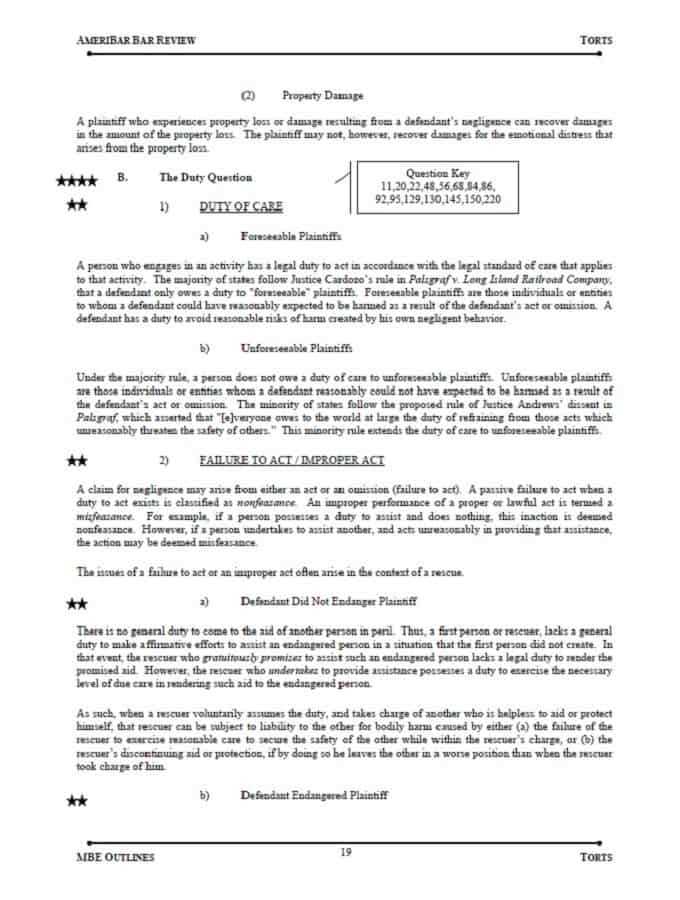
In this section, we delve into various complex scenarios that arise within the realm of civil law. Through analyzing different legal principles and real-life situations, the objective is to build a clear understanding of how the law applies to personal harm and liability disputes.
Exploring common legal conflicts provides insight into how courts handle cases involving negligence, intentional misconduct, and other related claims. By breaking down these legal matters, individuals can gain a deeper understanding of the factors that influence judicial decisions.
As you navigate through these examples, you will encounter practical exercises that challenge your comprehension and analytical skills. These exercises are designed to foster a more thorough grasp of how to approach such legal matters in both theoretical and practical contexts.
Understanding Torts in Legal Essays
When tackling legal issues related to personal harm, it’s essential to comprehend the underlying principles that govern liability and accountability. These principles form the foundation for evaluating cases where one party has caused damage to another, either intentionally or negligently. Understanding the structure of such disputes helps in forming logical arguments and provides clarity on how legal outcomes are reached.
Key Concepts to Grasp
- Negligence: A failure to exercise reasonable care, leading to unintended harm.
- Strict Liability: Holding a party responsible for damages regardless of fault.
- Intentional Harm: Acts done with the purpose of causing injury or damage to another party.
- Defenses: Legal strategies used to counter claims of liability, such as consent or self-defense.
Approaching Legal Scenarios

In practical applications, understanding how to analyze these disputes involves looking at the evidence, interpreting legal precedents, and identifying the relevant laws that apply. The ability to navigate through these elements is crucial for evaluating outcomes effectively.
- Identify the parties involved and their roles in the incident.
- Determine the presence of key factors like duty, breach, causation, and damages.
- Assess the applicable defenses and their impact on the potential outcome.
Overview of Tort Law Principles
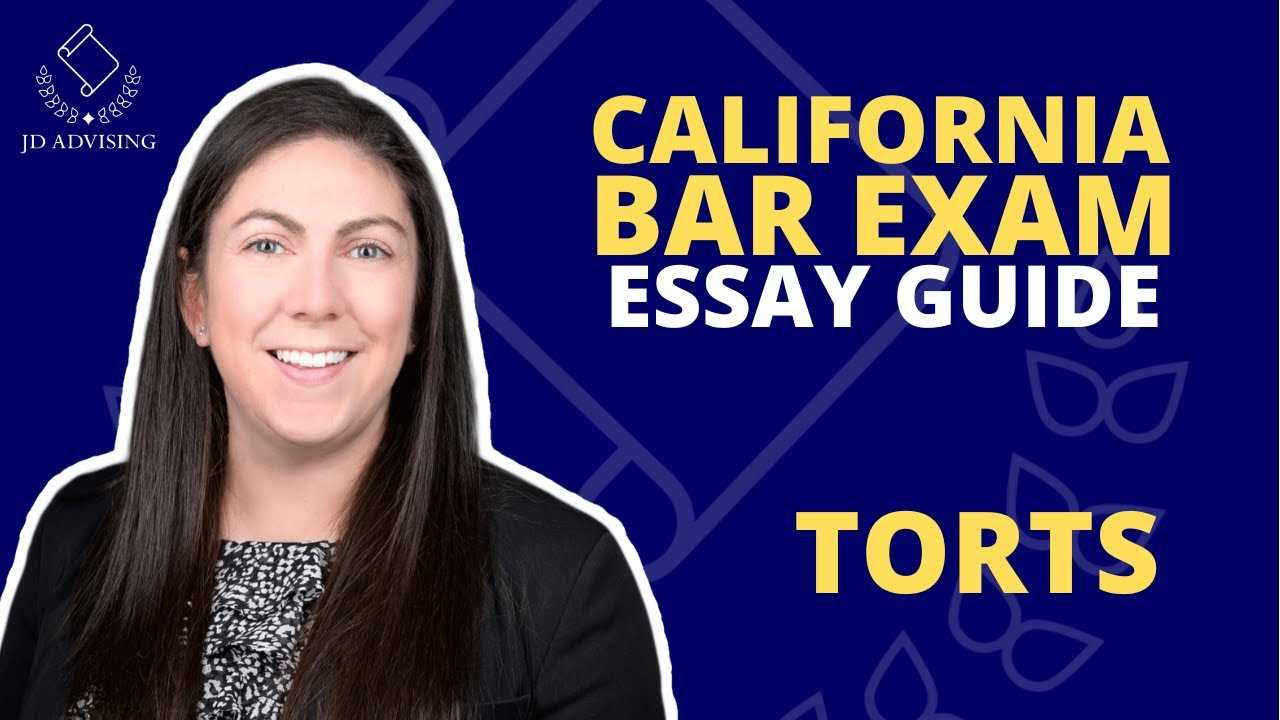
Legal disputes involving personal injury or harm are often based on the violation of established duties owed to others. These cases revolve around determining responsibility for damages caused by wrongful actions or negligence. The primary goal is to provide compensation to those who have been wronged and to uphold justice through the application of recognized legal standards.
Core Elements of Liability
- Duty of Care: The obligation one party has to avoid causing harm to another.
- Breach of Duty: Failing to meet the standard of care required by law.
- Causation: Establishing a direct link between the defendant’s actions and the harm suffered.
- Damages: The actual harm or loss sustained by the injured party, which justifies compensation.
Key Defenses in Legal Claims
Defendants may raise various arguments to challenge liability. Common defenses include the argument that the plaintiff consented to the risk, or that the harm was unavoidable due to circumstances beyond control. These strategies play a significant role in shaping the outcome of a case.
Common Types of Torts in Law
In legal practice, personal harm and damage to property can arise from various wrongful acts. These actions can be grouped into different categories based on their nature and the type of harm caused. Understanding these types is essential for evaluating the responsibility of the party at fault and determining the appropriate legal response.
Negligence and Carelessness
One of the most common forms of legal claims arises from failure to exercise reasonable care. When a person or entity acts in a way that does not meet the expected standard of care, leading to injury or damage, they may be held liable. Common examples include car accidents, slip-and-fall incidents, and medical malpractice.
Intentional Wrongs
Unlike negligence, intentional acts involve purposeful actions aimed at causing harm or injury to another. These include assault, battery, defamation, and trespassing. In such cases, the defendant’s intent plays a key role in determining liability.
Elements of a Tort Claim
For a legal claim involving personal harm to be successful, certain foundational components must be established. These key elements help determine whether the defendant should be held accountable for the damages sustained by the plaintiff. Each factor plays a critical role in building a solid case, and the absence of any one element can lead to a dismissal of the claim.
- Duty of Care: The defendant must have had an obligation to act in a way that does not cause harm to others. This duty varies depending on the relationship between the parties.
- Breach of Duty: There must be evidence that the defendant failed to meet the required standard of care, either through an action or failure to act.
- Causation: It must be shown that the defendant’s breach directly caused the harm or injury to the plaintiff, establishing a clear link between the two.
- Damages: The plaintiff must demonstrate that they suffered actual harm or loss as a result of the defendant’s actions, which justifies compensation.
Defenses Against Tort Claims
In legal proceedings involving personal injury or harm, defendants have several strategies to challenge the claims made by the plaintiff. These defenses aim to reduce or eliminate liability by presenting evidence or arguments that either negate the alleged wrongdoing or justify the defendant’s actions. Understanding these defenses is crucial for both plaintiffs and defendants in preparing for potential legal outcomes.
Common Defenses to Consider
- Consent: The defendant may argue that the plaintiff voluntarily agreed to the actions that led to the harm, such as in cases involving contact sports or medical procedures.
- Self-Defense: A defendant may claim they acted to protect themselves or others from immediate harm, justifying the use of force in certain circumstances.
- Assumption of Risk: In some cases, a defendant may argue that the plaintiff knowingly exposed themselves to potential harm, such as participating in dangerous activities with full awareness of the risks involved.
- Contributory or Comparative Negligence: The defendant may argue that the plaintiff’s own actions contributed to the harm or injury, reducing or eliminating the defendant’s responsibility for the damages.
Justifications for Harmful Actions
In some cases, defendants may assert that their actions were necessary due to specific circumstances, such as protecting property or preventing greater harm. These justifications can influence the outcome by demonstrating that the defendant’s conduct was reasonable under the given situation.
Negligence in Tort Law Explained
One of the most common legal concepts revolves around the failure to exercise the level of care that a reasonable person would in similar circumstances. This breach of duty can result in harm to others, leading to legal consequences. When an individual or organization neglects to fulfill their responsibility, they may be held accountable for the resulting damages or injuries.
Key Elements of Negligence include the establishment of a duty, the breach of that duty, causation, and the presence of actual harm. Each of these elements must be proven for a claim to succeed, as they collectively demonstrate the defendant’s failure to prevent foreseeable risks.
Duty of Care refers to the responsibility one has to act with caution to avoid causing harm. This duty is dependent on the relationship between the parties and the situation at hand. For example, a doctor has a duty to provide care to their patient, while a driver must operate their vehicle safely to avoid accidents.
Breach of Duty occurs when the defendant fails to meet the standard of care expected in a given scenario. This can include actions taken or, in some cases, the failure to take necessary steps to prevent harm.
Causation is crucial in linking the defendant’s breach to the actual harm experienced by the plaintiff. The harm must be a direct result of the defendant’s actions, not an unrelated incident.
Finally, Damages must be proven to show that the plaintiff suffered actual injury, loss, or harm as a result of the defendant’s negligence. Without damages, the claim for negligence cannot proceed.
Strict Liability and Its Application
In some legal situations, a party may be held responsible for harm caused by their actions, regardless of whether they acted negligently or intended to cause damage. This principle, known as strict liability, shifts the focus from fault to the nature of the activity itself. When certain conditions are met, liability is imposed without the need to prove carelessness or intent.
Application of Strict Liability is commonly seen in cases involving inherently dangerous activities or defective products. The law recognizes that some actions carry risks so significant that those who engage in them should be held accountable for any harm caused, even if they took precautions to avoid injury.
- Dangerous Activities: Individuals or companies involved in high-risk activities, such as explosives or toxic chemical handling, may be held strictly liable for any harm that occurs, regardless of safety measures in place.
- Product Liability: Manufacturers and sellers can be held responsible for injuries caused by defective products, even if the defect was not intentional or due to negligence.
Defenses to Strict Liability are limited but may include arguments such as assumption of risk, where the injured party knowingly exposed themselves to a dangerous situation. However, proving such defenses can be challenging, and strict liability remains a powerful tool for protecting public safety.
Intentional Torts and Their Impact
When someone deliberately causes harm to another, it can lead to significant legal consequences. These actions are typically characterized by the intent to inflict injury or damage, as opposed to those arising from carelessness. Such acts are taken seriously within the legal system, as they often involve clear and purposeful wrongdoing.
Types of Intentional Wrongdoing
- Assault: This occurs when one person intentionally creates a fear of imminent harmful or offensive contact with another, even if no physical contact actually occurs.
- Battery: In contrast to assault, battery involves actual physical contact that is harmful or offensive to the victim, carried out intentionally.
- False Imprisonment: This refers to unlawfully restraining someone’s freedom of movement without consent or legal justification.
- Defamation: Intentionally making false statements about someone that damage their reputation, either through slander (spoken) or libel (written).
- Trespass: This occurs when an individual intentionally enters or interferes with someone else’s property without permission.
Legal Consequences and Remedies
Victims of intentional acts have the right to seek compensation for the harm caused. Legal remedies often include monetary damages to cover medical expenses, emotional distress, and punitive measures aimed at deterring such behavior. Additionally, intentional harm may result in criminal charges, further amplifying the consequences for the perpetrator.
Comparative and Contributory Negligence
When multiple parties contribute to an incident resulting in harm, determining the level of responsibility each party bears can be complex. Legal systems offer different approaches to allocate fault between individuals in such cases. These methods aim to ensure that each party is held appropriately accountable based on their degree of involvement in the injury or damage.
Comparative Negligence
Under this approach, the fault is divided between the parties according to their individual contributions to the harm. The degree of responsibility assigned to each party influences the amount of compensation they can receive. If the plaintiff is found partially responsible, their damages may be reduced proportionally.
- Pure Comparative Negligence: The plaintiff can recover damages even if they are found to be more at fault than the defendant, but their award will be reduced by their percentage of responsibility.
- Modified Comparative Negligence: In this system, the plaintiff’s fault must be below a certain threshold (e.g., 50%) for them to recover damages. If their fault exceeds this threshold, they may be barred from receiving compensation.
Contributory Negligence
In jurisdictions that follow contributory negligence principles, even a small amount of fault on the part of the plaintiff can prevent them from recovering any damages. This is a strict rule that often leads to unfair outcomes when the plaintiff’s responsibility is minimal.
- All-or-Nothing Rule: If the plaintiff is found even slightly at fault, they are completely barred from receiving compensation, regardless of the defendant’s negligence.
- Exceptions: Some jurisdictions allow exceptions to the rule, such as when the defendant’s actions were egregiously reckless or intentional.
Both comparative and contributory negligence are designed to address fairness in cases where more than one party is at fault, but they differ in how they assign responsibility and award compensation.
Damages in Tort Law Cases
In legal disputes where harm or injury is caused, compensation is often sought to remedy the situation. These compensations are awarded to the injured party to make up for the losses or suffering they endured. The amount and type of compensation depend on various factors, such as the nature of the harm and the extent of the defendant’s liability.
There are different categories of compensation, each serving a specific purpose in addressing the impact of the wrongdoing. Below is an overview of the most common types of damages awarded in these cases:
| Type of Damage | Description |
|---|---|
| Compensatory Damages | These are designed to restore the injured party to the position they would have been in if the harm had not occurred. It includes medical costs, lost wages, and other financial losses. |
| Punitive Damages | Aimed at punishing the defendant for particularly egregious or intentional wrongdoing, these damages go beyond compensating the plaintiff and are meant to deter future misconduct. |
| Nominal Damages | These are small amounts awarded when a legal wrong has occurred, but no significant harm or financial loss was suffered. They affirm the plaintiff’s rights but do not compensate for actual losses. |
| Liquidated Damages | Pre-determined amounts agreed upon by both parties in a contract, these are meant to compensate for breaches of that contract and are often used in business-related disputes. |
| Emotional Distress | Compensation for psychological harm or suffering caused by the defendant’s actions. This can be awarded in cases where the emotional toll is significant, even if no physical injury occurred. |
Understanding the different types of damages is crucial for both plaintiffs and defendants. It ensures that the legal system provides appropriate remedies for the harm done, balancing fairness and accountability in each case.
Vicarious Liability in Tort Actions
In some situations, one party may be held responsible for the wrongful actions of another, even if the first party did not directly cause the harm. This principle is based on the idea that individuals in certain relationships, such as employers and employees, should be accountable for the actions of those under their control or supervision. It ensures that victims can seek compensation from those who are financially able to pay for the harm caused, even if they were not the direct wrongdoer.
Vicarious liability often applies in employment relationships, where an employer can be held responsible for the actions of an employee if those actions occurred within the scope of employment. However, there are specific conditions that must be met for vicarious liability to apply:
- Employer-Employee Relationship: The wrongdoer must be acting in the course of their employment, meaning the action was performed while carrying out work-related duties.
- Scope of Employment: Even if an employee causes harm, the employer may only be liable if the employee’s actions were related to their job responsibilities.
- Intentional vs. Negligent Acts: Employers may be held liable for both negligent acts and, in some cases, intentional wrongdoing if the action is closely connected to their job duties.
Vicarious liability also extends to other relationships, such as between a principal and an agent, or in some cases, a parent and child. However, the scope of liability and the conditions for its application can vary depending on the specific circumstances and jurisdiction.
Comparing Tort and Contract Law
Both areas of law serve to resolve disputes and provide remedies, but they differ in how they approach the rights and obligations of the parties involved. While one system focuses on addressing harm caused by wrongful acts, the other revolves around fulfilling promises made in agreements. Understanding the distinctions between these two branches is crucial for anyone involved in legal matters, as each offers a different path for seeking compensation or redress.
Key Differences Between Tort and Contract Law
The two fields diverge in several fundamental aspects, including the nature of the obligation, the parties involved, and the types of damages available. Below is an overview of their key differences:
- Basis of Legal Claim: In tort law, a claim is based on the violation of a duty owed to the public or an individual, typically arising from a wrongful act. In contract law, a claim stems from a breach of a legal agreement or promise made between parties.
- Parties Involved: Torts often involve one party causing harm to another without prior agreement, while contracts are entered into voluntarily by two or more parties who agree to specific terms.
- Obligations: In tort law, the duty is imposed by law and exists independently of any agreement. In contrast, obligations under contract law are based on the terms explicitly agreed upon by the parties.
- Types of Damages: Damages in tort law often aim to compensate for injury, loss, or harm suffered. In contract law, damages are designed to compensate for the loss caused by a breach of the contract, aiming to restore the injured party to their pre-breach position.
Similarities Between Tort and Contract Law
Despite these differences, there are some common elements shared between the two fields. Both areas of law:
- Provide Remedies: In both tort and contract cases, the goal is to provide a remedy for the aggrieved party, typically in the form of monetary compensation.
- Focus on Duty of Care: Both systems recognize the importance of duty, whether it’s a duty to avoid causing harm in tort law or a duty to fulfill contractual obligations in contract law.
- Allow for Liability: In both cases, liability can arise from a party’s actions, whether through negligence, breach of duty, or failure to honor an agreement.
Ultimately, the distinctions between tort and contract law are essential for determining which area of law applies in a particular situation, and understanding both is important for navigating legal disputes effectively.
Role of Causation in Tort Cases
Causation plays a critical role in determining liability in legal disputes. In any claim involving harm or injury, it is necessary to establish a direct link between the defendant’s actions and the harm suffered by the plaintiff. Without this connection, even wrongful actions may not lead to liability. The concept of causation ensures that individuals are held accountable only for the consequences that directly stem from their conduct.
Types of Causation in Legal Claims
In legal proceedings, causation is typically divided into two main categories:
- Actual Causation (Cause in Fact): This is the direct cause of harm, determined by whether the injury would have occurred but for the defendant’s actions. If the injury would not have happened without the defendant’s conduct, actual causation is established.
- Proximate Causation (Legal Causation): This limits liability to consequences that are closely related to the defendant’s conduct. Even if actual causation exists, proximate causation must also be proven to ensure the harm was a foreseeable result of the actions.
Establishing Causation in Legal Disputes
Proving causation is often one of the most challenging aspects of a case. Various factors come into play, and courts rely on several tests and doctrines to assess causality:
- But-For Test: This test asks whether the harm would have occurred without the defendant’s actions. If the answer is no, actual causation is typically established.
- Substantial Factor Test: This is used when multiple factors contribute to the harm, and it helps determine if the defendant’s actions were a significant factor in causing the injury.
- Foreseeability Test: Courts will assess whether the defendant could have reasonably foreseen the type of harm that occurred as a result of their actions, which helps establish proximate causation.
Understanding the role of causation is essential in determining responsibility and ensuring that individuals are held accountable only for harm they are directly responsible for causing. Without causation, claims of wrongful conduct would be less meaningful, as there would be no clear link between actions and consequences.
Legal Remedies for Victims of Wrongful Acts
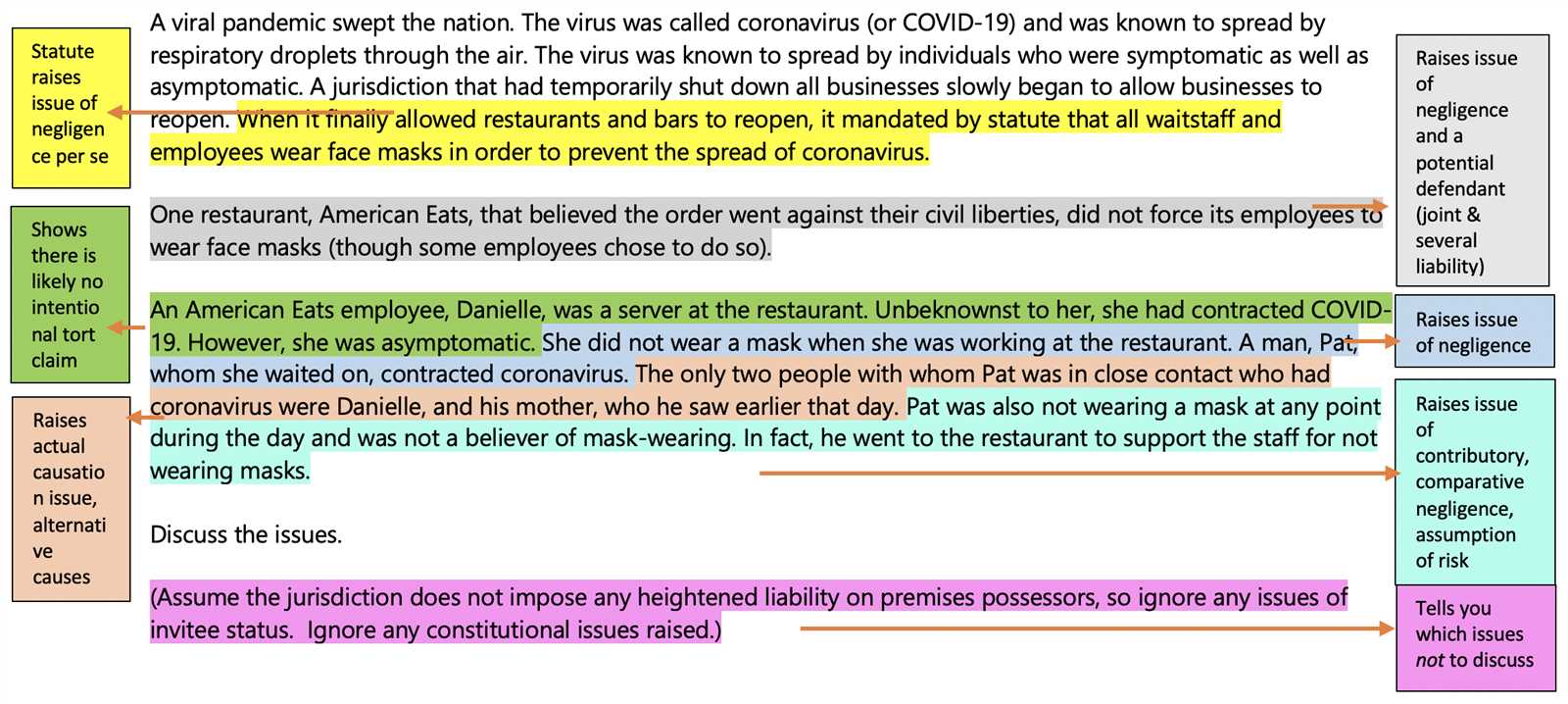
When individuals experience harm due to the actions or negligence of others, legal systems offer several remedies to address the injuries suffered. These measures are designed to compensate for damages, prevent future wrongdoing, or restore the victim’s rights. Depending on the situation, victims may be entitled to different forms of redress, ranging from financial compensation to preventive legal actions. The selection of the appropriate remedy depends on the severity and type of harm inflicted.
Common Legal Remedies
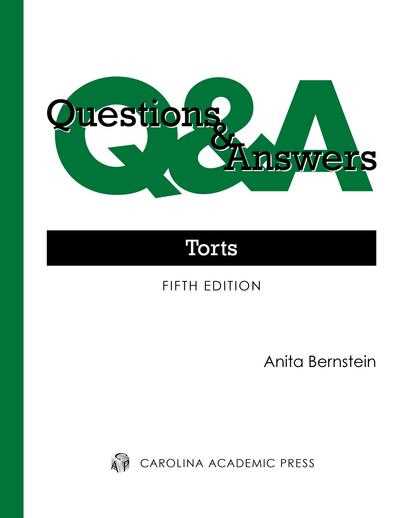
Legal systems provide a variety of solutions, each aimed at addressing specific aspects of the harm caused. Below are the most frequently applied remedies in cases involving wrongful conduct:
| Remedy | Description |
|---|---|
| Compensatory Damages | Financial compensation intended to cover the actual loss experienced by the victim, including expenses for medical care, lost wages, and pain or suffering. |
| Punitive Damages | Monetary awards given to punish the wrongdoer for particularly reckless or intentional behavior, and to deter others from engaging in similar actions. |
| Nominal Damages | Small amounts awarded when a legal violation occurs, but no significant harm is proven. These damages affirm the victim’s rights were violated. |
| Injunctions | A court order that mandates the defendant to stop certain harmful actions or to take specific steps to prevent further harm. This is often used to stop ongoing violations. |
| Restitution | A remedy that seeks to restore the victim to their original position, often by returning property or providing equivalent value for losses incurred. |
Selecting the Appropriate Remedy
In determining which remedy is most suitable, courts consider the type of harm caused, the defendant’s intent or negligence, and the impact on the victim. For instance, in cases of financial loss, compensatory damages may be appropriate. If a defendant’s conduct is egregious, punitive damages might be awarded. In situations where future harm is a concern, an injunction could prevent further violations.
Each remedy plays a crucial role in ensuring that justice is served and that victims receive appropriate relief for the harm they have experienced.
Impact of Reform on the Legal System
Recent changes in the legal framework have significantly altered the way claims for harm are handled. These modifications aim to address concerns about the costs, fairness, and efficiency of the judicial process. By adjusting certain procedures and limitations, these reforms have reshaped how justice is served in cases involving wrongful acts. While some argue that these changes are necessary to reduce frivolous claims and control escalating legal costs, others express concerns about the potential negative impact on victims seeking compensation for legitimate damages.
Key Changes and Their Effects
Reform initiatives have introduced various modifications designed to streamline the legal process and balance the interests of both plaintiffs and defendants. Here are some of the most significant changes:
- Damage Caps: Many reforms have imposed limits on the amount of financial compensation that can be awarded in certain cases, especially for non-economic damages such as pain and suffering. This aims to reduce the unpredictability of large settlements and decrease the burden on defendants.
- Increased Burden of Proof: In some jurisdictions, reforms have raised the standard of proof required for plaintiffs, making it more challenging for victims to prevail in their claims. This shift is intended to reduce the number of unsuccessful or excessive lawsuits.
- Class Action Limitations: Restrictions have been placed on class action lawsuits, which are often seen as a means to address widespread harm. These limitations are designed to prevent abuse of the system and promote more focused individual claims.
- Alternative Dispute Resolution: Encouraging the use of mediation and arbitration as alternatives to traditional court trials has become a key reform. This aims to expedite resolutions, reduce litigation costs, and free up court resources for more complex cases.
Criticisms and Support
While supporters argue that these reforms help reduce legal costs and prevent frivolous claims, critics contend that they disproportionately benefit large corporations and insurance companies at the expense of individuals seeking justice. They believe that certain reforms may limit access to the legal system for those who suffer significant harm but lack the resources to navigate the more restrictive procedures.
Ultimately, the impact of these reforms on the legal landscape continues to evolve as courts interpret new legislation, and as public opinion on the fairness and effectiveness of such changes remains divided.
Writing Tips for Legal Analysis in Civil Claims
When approaching a legal scenario, it’s crucial to construct your argument with clarity and precision. A well-structured response demonstrates your ability to break down the issue at hand, apply the appropriate legal principles, and analyze the facts in a logical manner. A clear presentation of your thought process not only helps you arrive at the correct conclusion but also ensures your argument is persuasive and thorough.
Key Steps for Structuring a Strong Response
To ensure a comprehensive and well-supported analysis, follow these key steps:
- Identify the Core Legal Issues: Begin by pinpointing the central issues of the case. This will guide the direction of your analysis and prevent you from overlooking any important points.
- State the Relevant Legal Principles: Clearly outline the applicable laws or doctrines that are relevant to the situation. Referencing established rules gives your argument a solid foundation.
- Apply the Law to the Facts: After stating the applicable rules, carefully examine how they apply to the facts of the case. This step is critical as it connects theory with practice.
- Provide a Conclusion: Based on your analysis, conclude by summarizing the likely outcome of the case. Your conclusion should logically follow from the legal principles and facts discussed.
Common Mistakes to Avoid
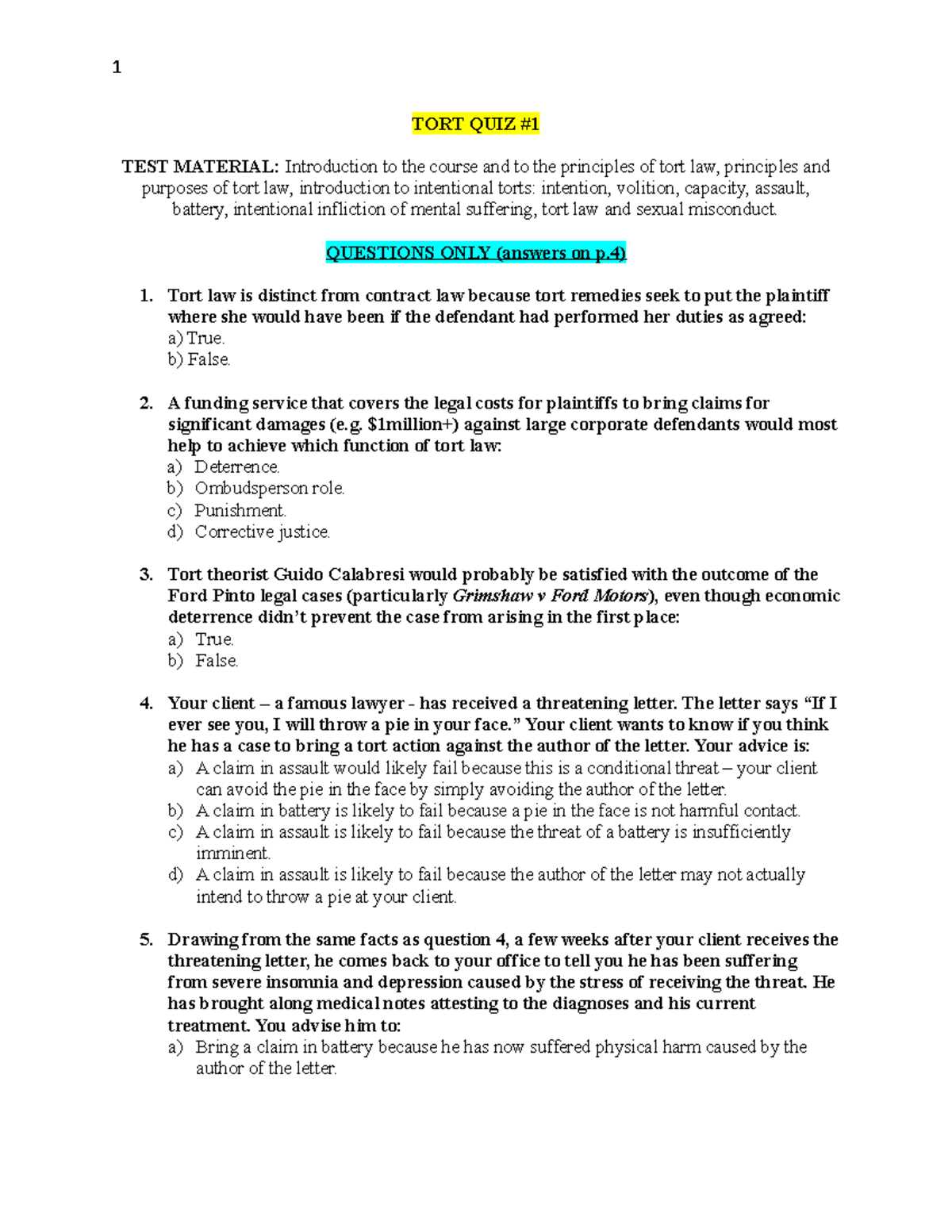
While writing, keep in mind these common pitfalls to ensure a clear and well-reasoned response:
- Avoid Over-Generalization: Make sure your analysis is specific and detailed. Vague statements can weaken your argument.
- Don’t Include Irrelevant Details: Stay focused on the most important points. Too much unnecessary information can distract from the core issue.
- Consider Alternative Perspectives: A strong response considers potential counterarguments or different interpretations of the facts.
Sample Structure for Effective Analysis
| Step | Action |
|---|---|
| 1 | Identify the main issues of law in the case |
| 2 | State the relevant legal principles |
| 3 | Analyze how the law applies to the facts presented |
| 4 | Explore possible counterarguments or alternate viewpoints |
| 5 | Conclude with a reasoned and well-supported judgment |
By following these steps, you will ensure that your response is both logical and persuasive. Structure your analysis in a clear, step-by-step manner, making sure to focus on the most relevant facts and laws. This will help you craft a well-rounded and effective legal argument.
Case Studies and Their Application

Case studies offer a practical way to explore how laws are applied in real-life situations. By reviewing specific legal disputes, one can observe how principles are interpreted and enforced in varied circumstances. These examples provide valuable lessons on the complexities of legal reasoning and decision-making. Understanding how different elements of a case influence outcomes is crucial for anyone seeking a deeper comprehension of the legal process.
Benefits of Using Case Studies in Legal Practice
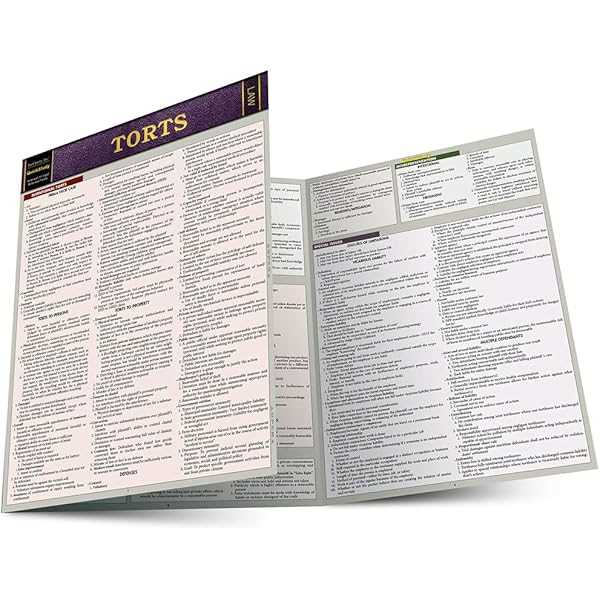
Case studies allow practitioners and students to analyze the application of legal concepts to actual events. They reveal the intricate process of how legal doctrines are implemented in specific instances. The following points highlight the advantages of incorporating case studies into legal learning:
- Practical Insight: They illustrate how abstract legal rules are applied to concrete facts, helping to bridge the gap between theory and practice.
- Precedent Setting: Key cases often establish precedents that shape future legal decisions, providing a foundation for consistent application of the law.
- Increased Legal Understanding: Case studies show the interplay between different legal principles and help explain how multiple factors can affect the outcome of a case.
- Enhanced Analytical Skills: Analyzing case studies develops critical thinking, enabling a better understanding of legal reasoning and argumentation.
Example of a Case Study Analysis
Below is a simplified example of how to break down a legal case to better understand its application:
| Step | Description | Example |
|---|---|---|
| 1 | Identify the key issue | Did the defendant owe a duty of care to the plaintiff? |
| 2 | State the applicable legal principle | Negligence laws regarding duty of care |
| 3 | Apply the law to the facts of the case | The defendant’s failure to act caused harm to the plaintiff |
| 4 | Assess any mitigating factors | Was the defendant acting under duress or with intent? |
| 5 | Conclude with a likely legal outcome | The defendant could be held liable for damages due to negligence |
By following this structured approach, legal professionals can more effectively analyze the application of law in specific cases, gaining a clearer understanding of judicial reasoning and potential outcomes. This method not only enhances legal knowledge but also hones practical skills for resolving disputes and making informed decisions.